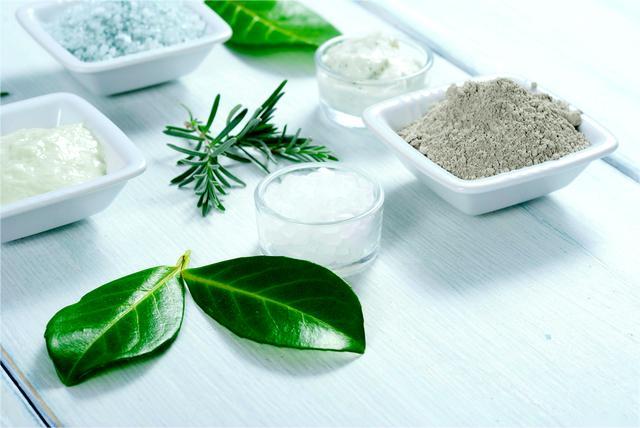Do You Need A List Of Botanical Extracts Efficient For Skin Aging?
People want to be youthful and aging-free, with skin that is always firm and wrinkle-free. But as age increases , our skin inevitably ages. However, currently, research has found that various natural plant extracts have positive preventive and protective effects on skin photoaging, such as tea extracts,Rhodiola rosea extracts, etc. Do you need a list of botanical extracts efficient for skin aging? Read this article, you will get a complete list of botanical extracts efficient for skin aging which have been tested by researchers.
So What Is Skin Aging?
Skin aging refers to the process of aging of the skin, which is either a natural aging process determined by human genes, or a cumulative manifestation of the body's exposure to environmental conditions such as ultraviolet rays, wind, sun, and a range of harmful chemicals [1] [2] [3].
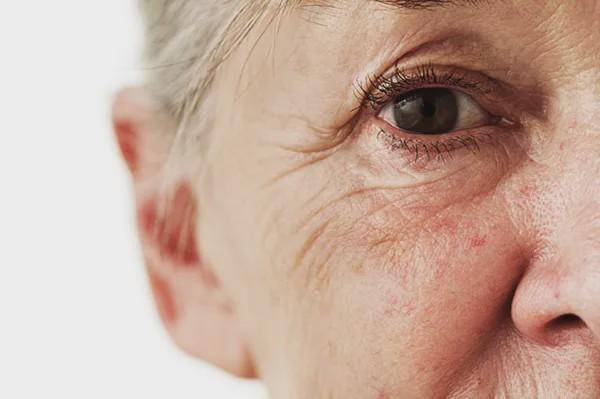
I. Factors Affecting Skin Aging
UV rays accelerate the aging process of the skin, and this damage leads to an accelerated decrease in water content of the skin, pigmentation is more likely to settle, and a significant decrease in skin elasticity, the appearance of deep intrinsic wrinkles, and ultimately, the manifestation of skin aging. The pathways by which skin aging is affected have been categorized in the following ways:
1) Apoptotic Genes:
The specific genes that determine apoptosis in mammals have not yet been identified, but studies have shown that they are related to photoaging based on the following genes: Bcl-2, c-myc, P53, Ice, Fas/Apo-1, Fas gene, bcr/abl gene, caspase-3 protein, and so on.
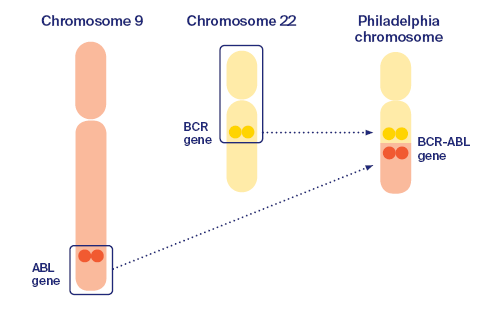
2) Photoaging Due to Free Radical Production and Lipid Peroxidation:
a) The product of lipid peroxidation (LPO) is malondialdehyde (MDA), and the level of lipid peroxidation can be reflected by measuring the amount of malondialdehyde in tissues, cells, and plasma. b) Lipid peroxidation can be measured by measuring the amount of malondialdehyde in tissues, cells, and plasma. c) Lipid peroxidation can be measured by determining the amount of malondialdehyde in tissues, cells, and plasma.
b) The production of free radicals involves:
① Damage to nucleic acids;
② Damage to proteins;
③ Damage to sugar;
④ Damage to cellular mitochondria.
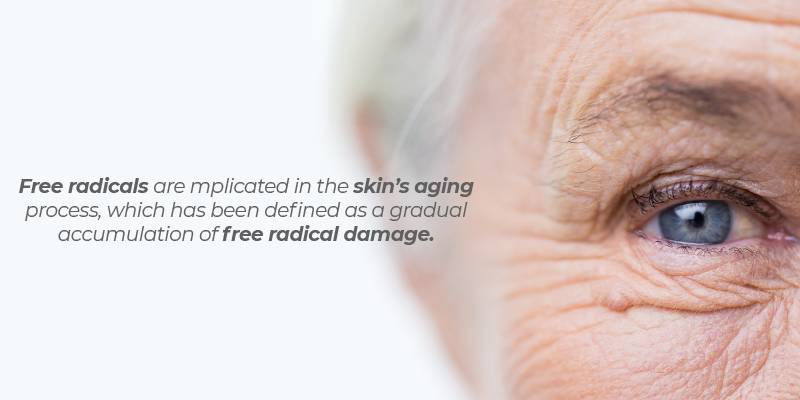
Free radical scavenging enzymes include SOD, CAT, peroxidase represented by GSH-PX and glutathione sulfotransferase (G-ST), etc. The main component of collagen is hydroxyproline (HYP).
II. What Are the 3 Types of Active Ingredients Currently Used for Anti-Skin Aging?
There Are Three Types of Active Substances That Have a Resistance Function Against Skin Aging:
①Biological agents.
For example, coenzyme Q10, catalase (CAT), papaya mercapturic enzyme, metallothionein (MT), glutathione peroxidase (GSH-PX), superoxide dismutase (SOD), and so on;
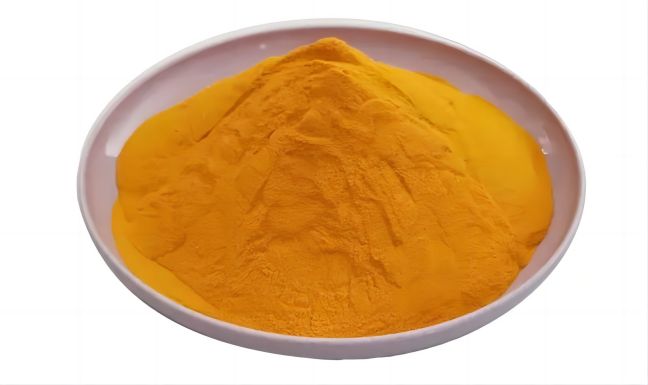
② Natural Chinese herbal medicine preparations.
For example, the extract of Chinese herbal medicine includes Gynostemma pentaphyllum, Ganoderma lucidum, Salvia miltiorrhiza, Ginseng, Ginkgo biloba leaves, deer antler, etc;
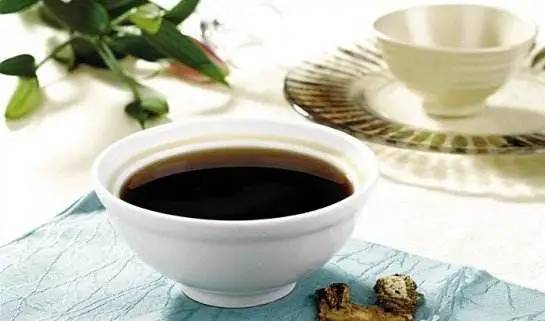
③ Chemical synthesis, semi synthetic preparations.
For example, chloramphenicol, chlorpromazine, curcumin, whey magnesium, various anti-crosslinking chelating agents and chelating agents, 2-mercapto ethylamine (2-MEA), butylated hydroxytoluene (BHT), selenomethionine, various artificially synthesized antioxidant enzymes, antioxidants and their derivatives (VE, VA, VC β Carotenoids, coenzyme Q10, and urea [4].
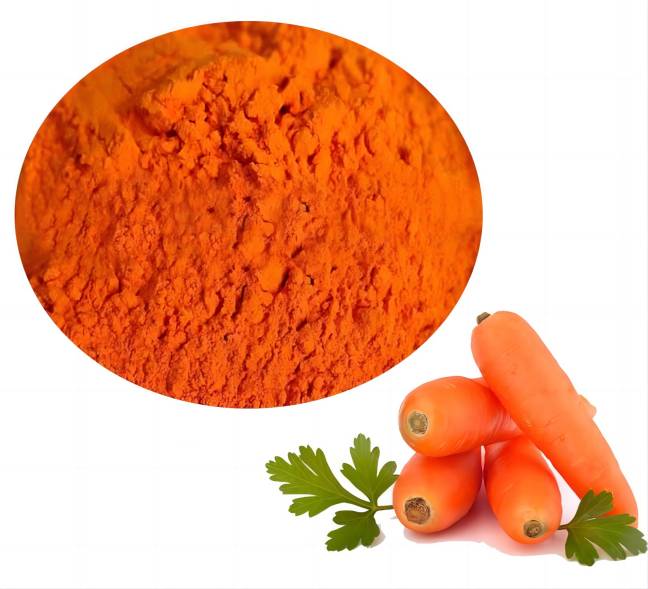
Among them, natural compounds with strong antioxidant properties and low toxicity have become a research craze in recent years. Plant compounds include a variety of chemicals including polyphenols, monoterpenes, flavonoids, and organosulfides, of which indoles have been shown to have antitumor effects. The modes of action of these compounds include anti-inflammatory and immune stimulation, detoxification, modulation of antioxidants and alteration of gene expression, and maintenance of tissue homeostasis.
III. List Of Botanical Extracts Efficient For Skin Aging
1) Tea Extract
a) The polyphenolic substances in tea are uniformly called tea polyphenols, and their main components are flavanones and catechin compounds, which occupy 60% to 80% of tea polyphenols [5]. After many experimental studies, Liu Qing found that tea polyphenols, a mixture of catechin monomers, have the ability to scavenge ROS to a certain extent, can effectively reduce the level of LDH, and reduce DNA damage, and can have a significant effect in the level of protection against UV-induced acute photodamage in HSF cells, and also have a significant effect on the expression of CAT, GCLM, GCLC, SOD, NQO1 mRNA antioxidant enzymes and II-phase detoxification enzyme mRNAs. The expression of CAT, GCLM, GCLC, SOD, NQO1 mRNA antioxidant enzymes and II-phase detoxification enzyme mRNAs was also promoted to a certain extent, which may be an important mechanism for photoprotection [6].
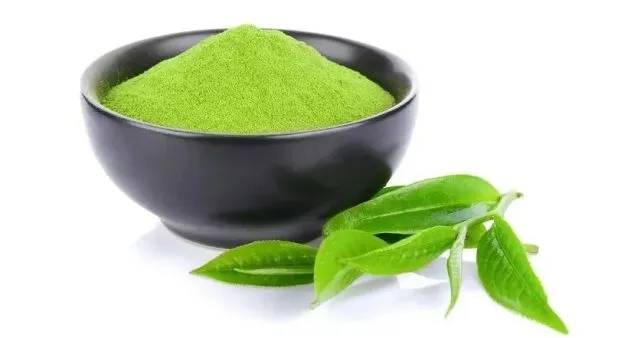
b) Theaflavin is an orange-yellow benzodiazepine ketone compound, soluble in ethyl acetate, which is generated from catechins by coal-promoted phenylpropanoid cyclization [7]. Yulan Shi found that theaflavin monomer TF3'G can repair cell structure, promote the expression of anti-oxidant genes SOD and CAT, and mitochondrial fusion gene Mfn2, and then positive feedback on the expression of anti-apoptotic factor Bc1-2, and at the same time, it also has the function of inhibiting the expression of pro-apoptotic factor Bax and caspase-3, and effectively reduce the UVB-induced HaCaToxicity of the cell by reducing the number of the UVB-induced HaCaToxicity. UVB-induced apoptosis of HaCaT cells can be effectively protected by reducing the apoptosis induced by UVB [8].
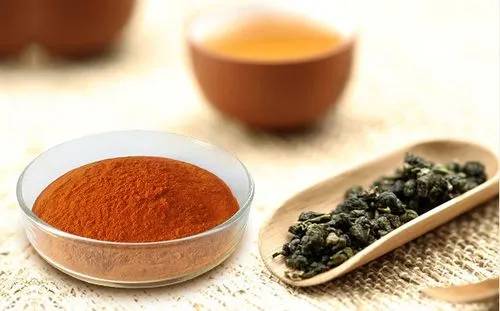
2) Licorice, Rhodiola, And Astragalus Crude Extracts
Famous Chinese medicine expert Zhao Min and his team have found through research that the crude extracts of Rhodiola, Astragalus, and Glycyrrhiza have a photoprotective effect on the skin, which is achieved by inhibiting the activity of caspase-8 to reduce TNF- α The content ultimately achieves the effect of inhibiting skin cell apoptosis [9].
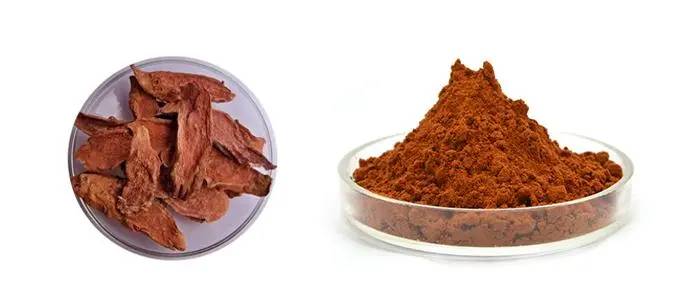
3) Extracts of Paeonia Root, Peony Root and Purple Peony Root
Paeoniflorin (PF) is derived from Chinese herbal medicines such as the roots of Paeonia lactiflora root, peony root, and purple peony root[10]. Paeoniflorin alone can increase the expression of intracellular antioxidant genes Nrf2, HO-1, and NQ-O1, and the higher the concentration of paeoniflorin, the more pronounced the effect is, which can reduce the level of oxidative stress in cells. Paeoniflorin regulates the expression of PLIN2 by modulating oxidative stress [11].
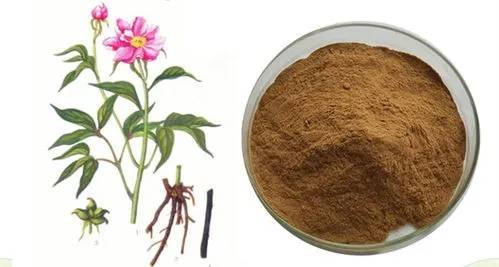
4) Purple Potato, Black Bean, Mulberry, Blueberry Extracts
Cyanidin-3-O-glucoside (C3G), a common anthocyanin, is an extract from dark-colored plants such as purple potatoes, black beans, mulberries, and blueberries. If the regulation of the TGF-β/Smad pathway and the expression of MMP-1 has a protective function on collagen homeostasis in the skin, it can effectively reduce skin damage. Peng Ziyao has found that chronic photodamage to the skin can be ameliorated by dietary modification or by applying G3G [12].
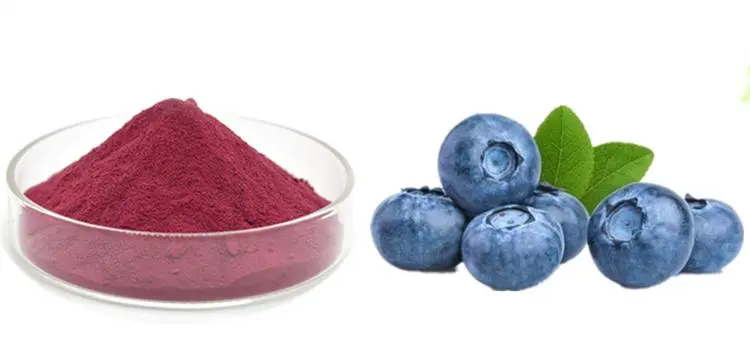
5) Hesperidin, Baicalin, Cornflower and Silymarin Extracts
Inhibiting the expression of MMPs and increasing the content of type I pre-collagen by regulating the MAPK/AP-1, TGF-β/Smad, NF-κB/I-κB pathways to maintain normal synthesis and degradation of extracellular matrix, and thus achieve the effect of anti-photo-aging [13], is also a very good choice, and Peng Ziyao's team found that flavonoid compounds extracted from plants, such as hesperidin, baicalein, cornflower-3-O-glucoside, and silymarin, can affect these pathways. Peng Ziyao's team has found that flavonoid compounds extracted from plants such as hesperidin, baicalin, cornflower-3-O-glucoside, and silymarin can regulate this pathway.
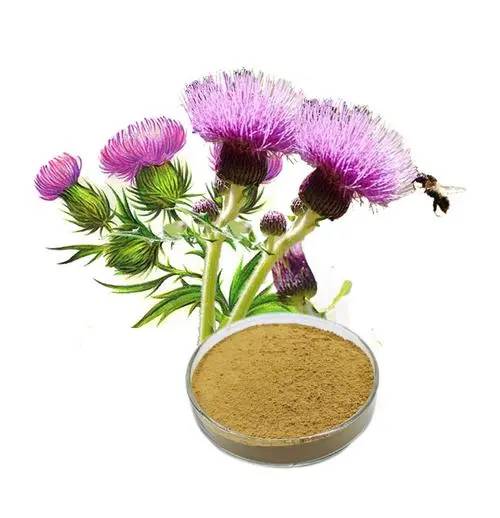
6) Honeysuckle Extract
Zhang Lihong's team suggested that if the expression of the MMP-1 gene is inhibited, the decomposition of collagen in the skin will also be inhibited, which is also an effective anti-aging treatment, and lignans are a kind of "therapeutic agent" with this function, and honeysuckle contains lignans, which are natural flavonoids [14].
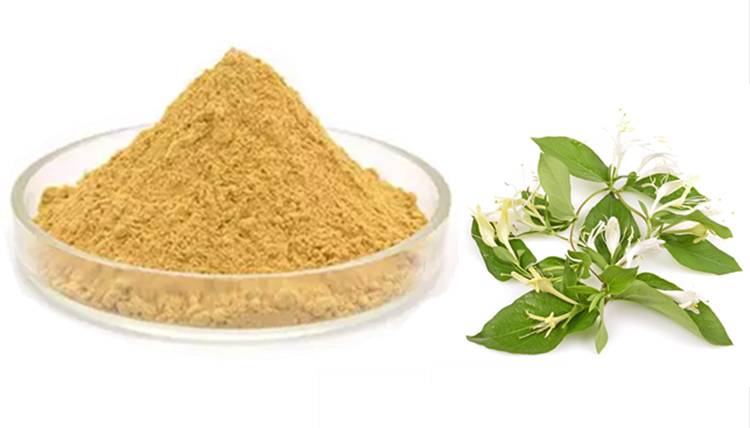
7) Calendula Officinalis Extract
Topical application of calendulin has the ability to reduce the secretion of inflammatory cytokines, thus inhibiting the expression of the MMP-1 gene, and also has the function of combating skin aging, which has been verified by Xinli Wang's team through a mouse aging model [15].
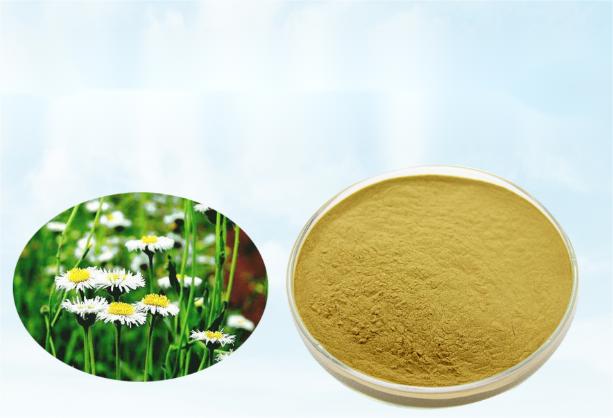
8)Seven Leaf Gynostemma Pentaphyllum Extract
Seven leaf Gynostemma pentaphyllum is a type of Gynostemma pentaphyllum, which has the effect of reducing blood pressure, blood lipids, and blood sugar. In medical practice, it improves sleep by calming and calming the mind, thus providing auxiliary treatment for neurasthenia. Moreover, Gynostemma pentaphyllum also has the effect of clearing heat and detoxifying, and can to some extent inhibit cell carcinogenesis and kill cancer cells. Wang Tingou's team found that the mechanism of inhibiting the secretion levels of PGE2 and COX2, as well as the expression of MMP-1 genes, may be involved in the protection of the skin against photoaging. From this perspective, Gynostemma pentaphyllum can also serve as a new effective inhibitor for preventing photoaging [16].
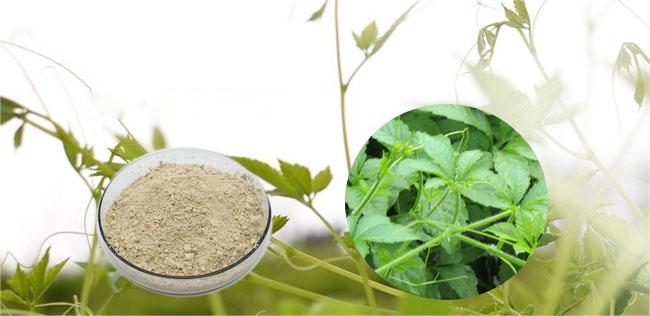
9) Hawthorn Leaf Extract
Hawthorn leaf extract (HLE) showed antioxidant activity, with 95% alcohol extract having the highest activity; the total phenol content of each HLE showed a positive correlation with its antioxidant activity, with 95% alcohol extract having the highest total phenol content; HLE was able to attenuate the effect of UVA radiation-induced inhibition on the proliferation of HaCaT cells; 95% alcohol extract of hawthorn leaf was able to significantly reduce the expression of protein molecules such as γ-H2AX, HSP90, p-p38/MAPK, MMP9, COL1A1, etc., in Ha Ca T cells induced by UVA radiation. H2AX, HSP90, p-p38/MAPK, MMP9, COL1A1 and other protein molecules in HaCa T cells induced by UVA radiation. Thus, HLE has anti-photo-aging effects related to its antioxidant activity, modulation of heat shock stress response and P38/MAPK-mediated signaling pathway of MMPs, and inhibition of collagen and fibronectin degradation [17].
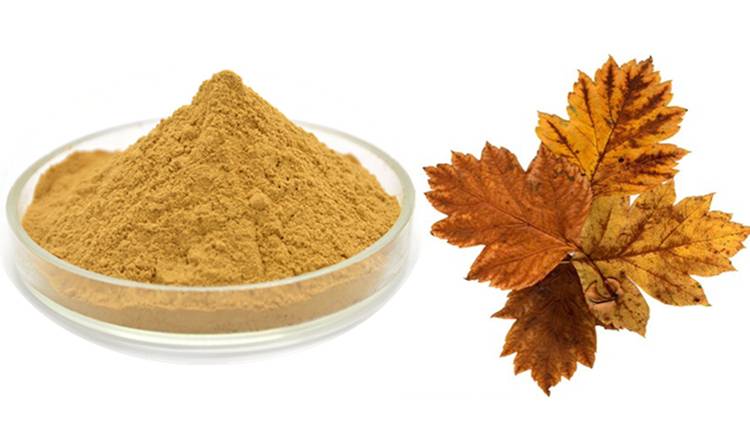
10) Fruit Extracts of Magnolia Officinalis
Magnolia officinalis is a plant of the Magnoliaceae family, Magnoliaceae. The bark, root bark, flowers, seeds and buds are all used as medicine. The total phenylethanol glycosides (PG) and the phenylethanol glycoside analog magnoloside I from the fruit of Magnolia officinalis, studied by Lanlan Ge, can alleviate the oxidative damage of the skin caused by UVB by scavenging free radicals, enhancing the activity of the chemoattractant enzymes CAT, SOD, and GPX, and inhibiting the increase in the level of MDA, as well as preventing the reduction of the content of collagen in the skin. radiation. In addition, PG and magnolosideIa can inhibit the activation of MAPK/NF-KB signaling pathway, and ultimately reduce the production of inflammatory factors to achieve anti-inflammatory and photoprotective effects [18].
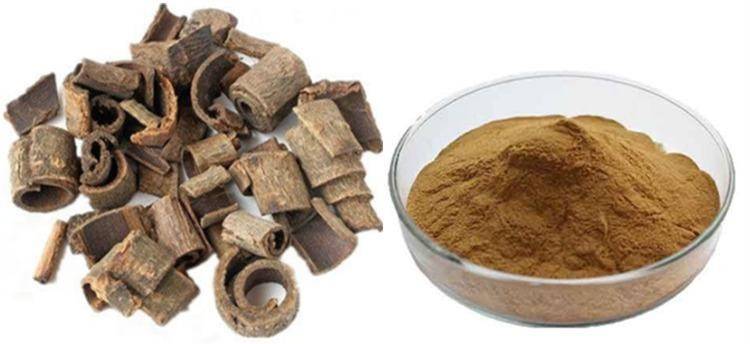
11)Polygonum Cuspidatum Extract
Resveratrol has an antioxidant effect and is commonly extracted from Polygonum cuspidatum. Through a comparative experiment with a high-dose treatment group of resveratrol in a mouse model, Kuang Xiaodong's team found that high-dose resveratrol can affect the synthesis of enzymes produced by UV in mice, increase the activity of antioxidant enzymes in photoaging skin, and then change the content of oxidative products, effectively combating skin aging caused by UV [19].
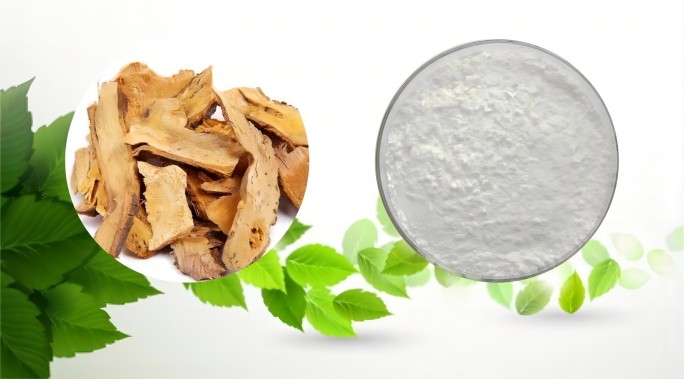
12) Goji Berry Leaf Extract
If the activity of SOD, GSH-PX, and CAT in skin tissue is improved, it can also effectively eliminate free radicals in skin tissue, thereby preventing skin damage caused by UVB irradiation. Lv Yanhong has found through research that external use of total flavonoids from goji berry leaves can enhance the activity of SOD, GSH-PX, and CAT, enhancing the body's skin's ability to resist ultraviolet radiation [20].
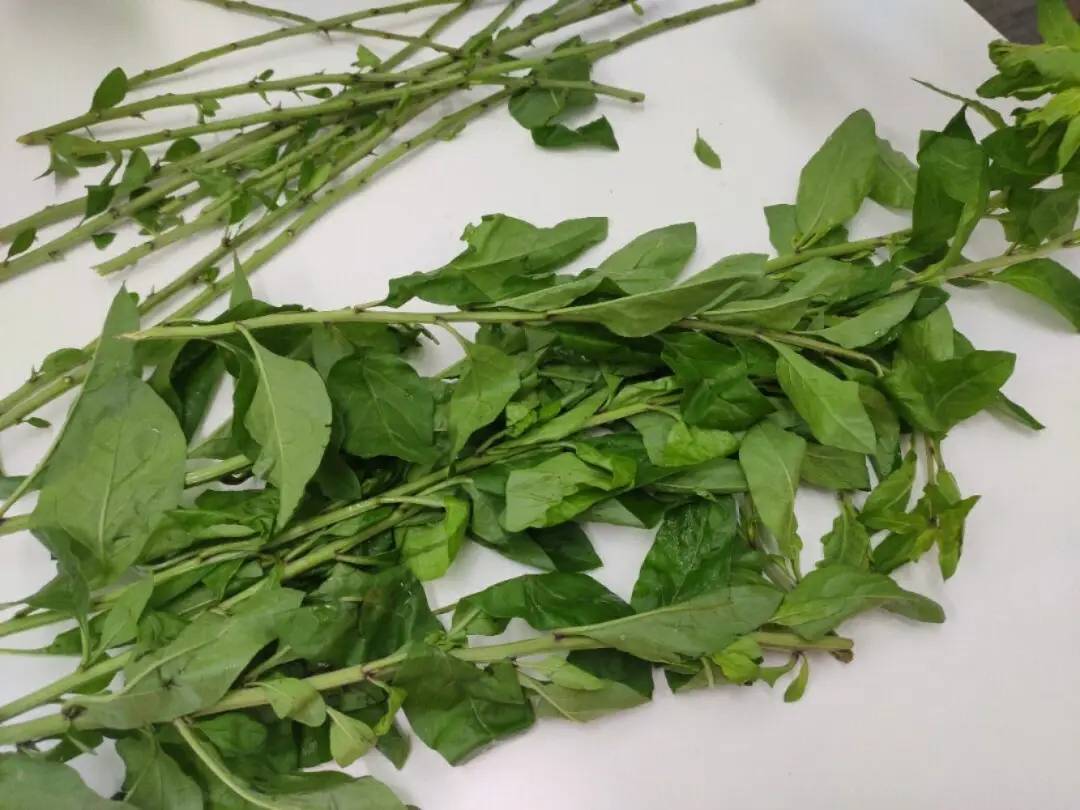
13) Lavender Extract
Lavandula angustifolia (Lavandula angustifolia) total flavonoids have a significant effect on anti-photodamage, and Tan's team found that the HaCaT cells in the control group were less damaged by the administration of LAVANDERA total flavonoids as a variable in the guinea pig skin control model, with lower MDA content, higher SOD activity, and the effect was positively correlated with the concentration of LAVANDERA total flavonoids administered [21].
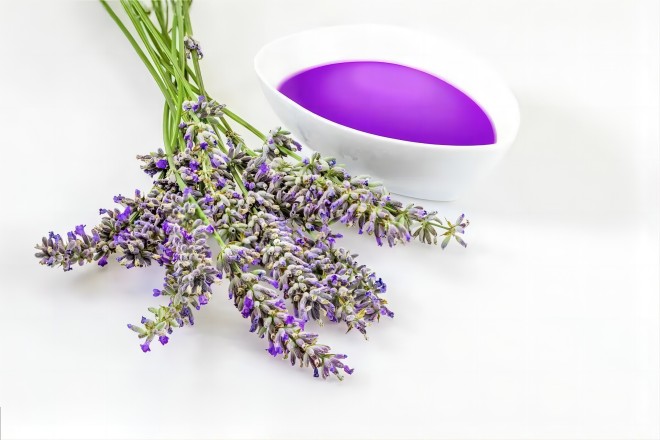
14)Moringa Oleifera Leaf Extract
Glutathione (GSH) content, catalase (CAT), glutathione peroxidase (GSH-Px) and superoxide dismutase (SOD) activities in the skin tissues of the body are positively regulated by Moringa leaf polyphenol extract (MLE), which significantly reduces the amount of malondialdehyde (MDA) production, and the results of experiments on mice by Sun Liping team found that MLE was able to significantly reduce the content of MMPs (MMP-1, MMP-3 and MMP-9) in photoaged skin [22].
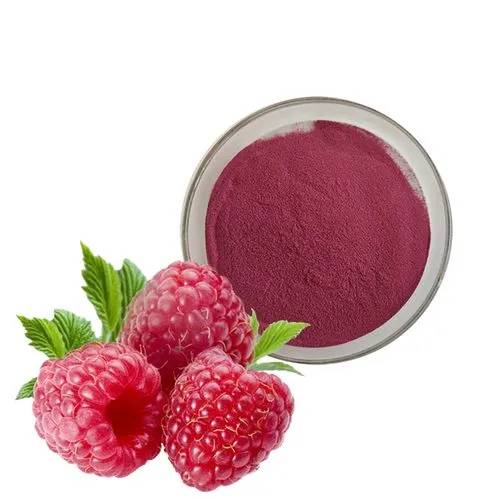
15) Red Raspberry Extract
Lin Yong et al. found that red raspberry extract could significantly increase the activity of HaCaT cells after UVB irradiation, increase the activity of SOD and GSH-Px, reduce the content of MDA and ROS, reduce the activity of LDH and increase the content of Hyp in a dose-dependent manner, reduce the cell damage caused by UVB, and reduce the rate of apoptosis [23].
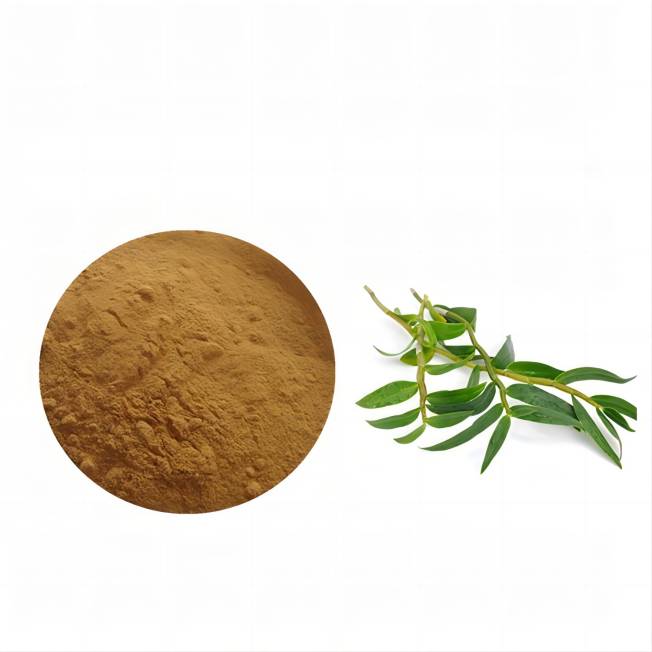
16) Dendrobium Officinale Extracts
Dendrobium officinale extracts (DOE) have a significant position in the Chinese traditional medicine medical system due to their significant antioxidant, anti-inflammatory, hypoglycemic, and refreshing effects [24]. Lu Qiujing's team found that SOD, GSH-Px, CAT, and TIMP- 1 content and activities were significantly higher in DOE-applied control than blank group, and MDA, MMP-9 activities were also significantly inhibited, The content and activity of SOD, GSH-Px, CAT and TIMP-1 in the skin tissue of the control group coated with DOE were significantly higher than those of the blank group, and the activities of MDA and MMP-9 were also significantly inhibited. This suggests that Dendrobium extract can effectively reduce the decomposition rate of collagen and collagen fibers in mouse skin tissues to protect the skin from photodamage.
At present, the main factors causing skin aging are UVA and UVB, and the most important means of treatment for skin photodamage in clinical practice is topical medication in addition to systemic treatment with glucocorticosteroids and antihistamines, and natural plant extracts provide a new and safer possibility for the clinical treatment of skin aging.
References:
[1] LIU Guoning, CHEN Bin. Research Progress on the Mechanism of Elastic Tissue Degeneration in Skin Aging[J]. Journal of Clinical Dermatology, 2013, 42(5): 325-328.
[2] ZENGMing, XU Liang. Research Progress of Skin Aging Mechanism and Aging State Assessment Method[J]. China Aesthetic Medicine, 2014(23): 2025-2028.
[3] WANG Shihan, WU Jingdong. A Review of Research on Skin Photoaging and Its Prevention[J]. Journal of Liaoning College of Traditional Chinese Medicine, 2004, 6(1): 18- 19.
[4] LIU Zhongrong, YANG Jun, YANG Huilan, et al. Research Progress of Active Ingredients in Anti-Skin Aging Cosmetics[J]. China Aesthetic Medicine, 2005, 14(3): 362-365.
[5] WANG Li, ZHAI Jinlan, YANG Ting, et al. Application and Extraction Methods of Tea Polyphenols[J]. Food Research and Development, 2006, 27(3): 154- 156.
[6] LIU Qing, JIANG Na, PENG Liqian, LIANG Bihua, ZHANG Erting, LI Runxiang, DENG Huiyan, LI Huaping, LI Zhenjie, ZHU Huilan. Protective Effects of Tea Polyphenols Against Acute Photodamage in Hfs Cells Caused By UVA/UVB[J]. Chinese Journal of Laser Medicine, 2017, 26(5): 246-253+290.
[7] Roberts, E.A.H. ( 1958) The Phenolic Substances of Manufactured Tea (II). Journal of the Science of Food and Agri- culture, 9, 212-216.
[8] ZHAO Min, BIAN Fang, TIAN Zhuohua, XIAO Hui, PAN Zhi, YANG Guilan. Protective Effects of Glycyrrhiza Glabra, Rhodiola Rosea and Astragalus Membranaceus Crude Extracts on Uvb-Induced Chronic Photodamage in Mouse Skin[J].
World Scientific Research and Development, 2015, 37(3): 295-299+331.
[9] Yokoyama, S., Hiramoto, K., Koyama, M., et al. (2015) Impaired Skin Barrier Function in Mice with Colon Carcino-
ma Induced by Azoxymethane and Dextran Sodium Sulfate. Biological and Pharmaceutical Bulletin, 38, 947-950.
[10] LU Yansong. Protective Effect of Paeoniflorin on Uva-Induced Skin Photodamage and Its Mechanism [D]: Shenyang: China Medical University, 2020.
[11] PENG Ziyao. Protective Effects of Cornflower-3-O-Glucoside Against Uv-Induced Chronic Photodamage in Female Mouse Skin [D]: [Master's thesis]. Guangzhou: Jinan University, 2020.
[12] PENG Ziyao, JIANG Xinwei, SUN Jianxia, LI Xusheng, HU Yunfeng, TIAN Lingmin, BAI Weibin. Research Progress of Flavonoids on Skin Photodamage Protection[J]. Food Science, 2019, 40(11):246-253.
[13]ZHANG Li-Hong, ZHANG Ning, LIU Guo-Liang, WANG Yao. Protective Effects of Lignans, An Effective Component of Honeysuckle, On Skin Photoaging Caused by Uvb Radiation[J]. Journal of Chinese Medicine, 2016, 44(3): 27-30.
[14] WANG Xinli, HE Li, TO Ying, NONG Xiang. Study on the Mechanism of the Anti-Skin Photoaging Effect of Calendulin[J]. Dermatology and Venereology, 2015, 37(4): 197-200+203.
[15] WANG Ting-Ou, WU Jing-Dong. Effects of Gynostemma Heptaphyllum Cholinoside Xvii on Serum Levels of Prostaglandin 2 and Cyclooxygenase 2 And MMP- 1 Expression in Skin Tissues of Photoaged Mice[J]. Journal of Chinese Medicine, 2019, 34(5): 1012- 1015.
[16] HUANG Li-Sen, GAO Quan-Yuan, CHEN Fang-Fang, CHEN Yu-Pei, PANG Hai-Yue, WU hon-Tan, WANG Gui-Hong. Anti-Uva-Induced Photoaging Effect of Hawthorn Leaf Extract On HaCaT Cells [J]. Flavors, Fragrances and Cosmetics, 2021(4): 59-63+67.
[17] Ge, Lanlan. Research on Phenylpropanoid Constituents and Their Antioxidant Efficacy in the Fruits of Avena Sativa [D]: [Doctoral dissertation]. Wuhan: Wuhan University, 2017.
[18] FANG Xiaodong, CHI Wenping, ZHOU Xiaoyan, et al. Protective Effects of Resveratrol on Skin Photoaging[J]. Journal of Nanchang University (Medical Edition), 2015, 55(1): 4-6+107.
[19]LV Yanhong. Study on the Protective Effect of Total Flavonoids of Lycium Barbarum Leaves on Skin Photodamage Caused By UVB Irradiation in Hairless Mice [D]: [Master's thesis]. Lanzhou: Lanzhou University, 2016.
[20] TAN Wei, ZHANG Lanlan, XU Lei, HAMULATI Hasmu, HU Mengying, SUN Yuhua. Protective Effects of Total Flavonoids of Lavandula Angustifolia Against UVB-Induced Skin Photodamage[J]. Lishizhen Medicine and Materia Medica Research, 2019, 30(5): 1087- 1090.
[21] Sun Liping, Li Pengcheng, Zhuang Yongliang, Sun Yun. Protective Effects of Polyphenol Extracts from Moringa Oleifera Leaves on the Skin of Photoaged Mice[J]. Food and Fermentation Industry, 2020, 46(18): 67-71.
[22] LIN Yong, LIU Shuo, ZHU Huawei, LIU Zhonghua. Inhibition of UVB-induced HaCaT Photodamage by Red Raspberry[J]. Journal of Hunan Agricultural University (Natural Science Edition), 2015, 41(5): 474-479.
[23] Zheng Qiuping. Separation and Purification of Anti-Tumor Active Substances from Dendrobium Officinale[D]: [Master's thesis]. Guangzhou: South China University of Technology, 2014.
[24] LU Qiujing, ZHOU Mengdi, WANG Zhele, LIU Liping. Protective Effects of Dendrobium Officinale Extract on Skin Photodamage in Mice[J]. Proprietary Chinese Medicine, 2016, 38(10):2303-2306.


 English
English French
French Spanish
Spanish Russian
Russian Korean
Korean Japanese
Japanese

